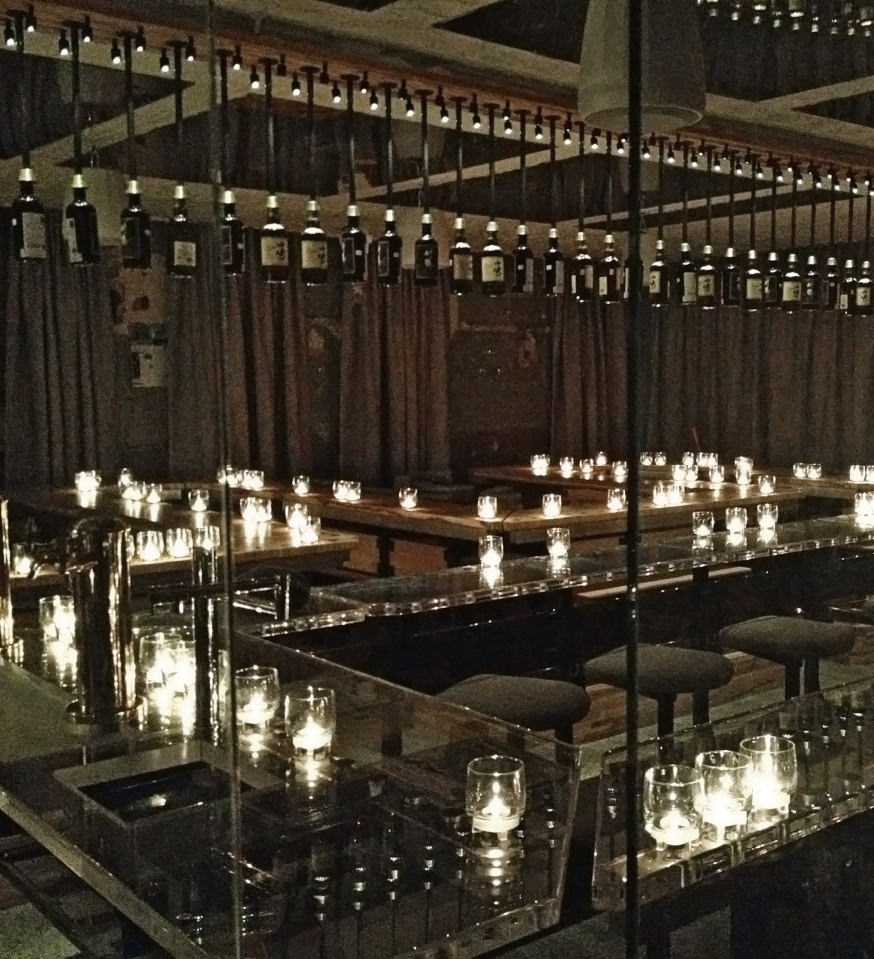Design Space: La Maison Noire, Montreal’s Black Design Oasis
Showcasing some of Quebec’s top design talent.
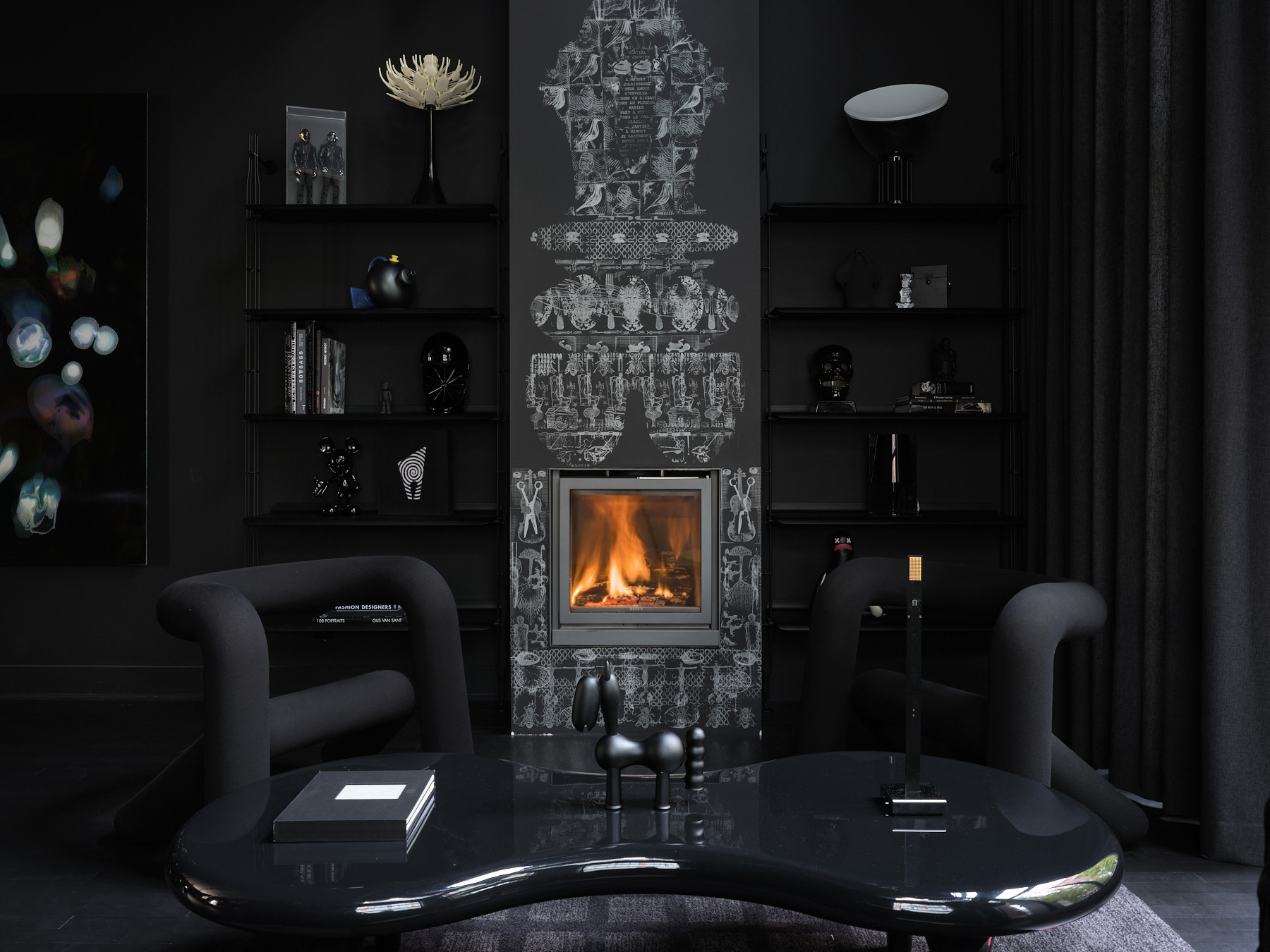
Long avoided in anything larger than a sofa for fear of looking goth or cold, black is having a moment in the design world. One Quebec residential project is going all in with La Maison Noire.
A collaborative effort between Index-Design, a Quebec organization that promotes and informs the architecture and design communities, multidisciplinary design company La Firme, and new artistic direction firm Bolitomino Studio, La Maison Noire is part private residence and part showroom. The concept was to create an intimate display of Quebec and international distributors, brands, and products that highlight the latest design trends, presented within the pages of Index-Design’s 16th edition of Guide 300 Design Listings to Design and Renovate, an annual directory of the province’s design resources and references.
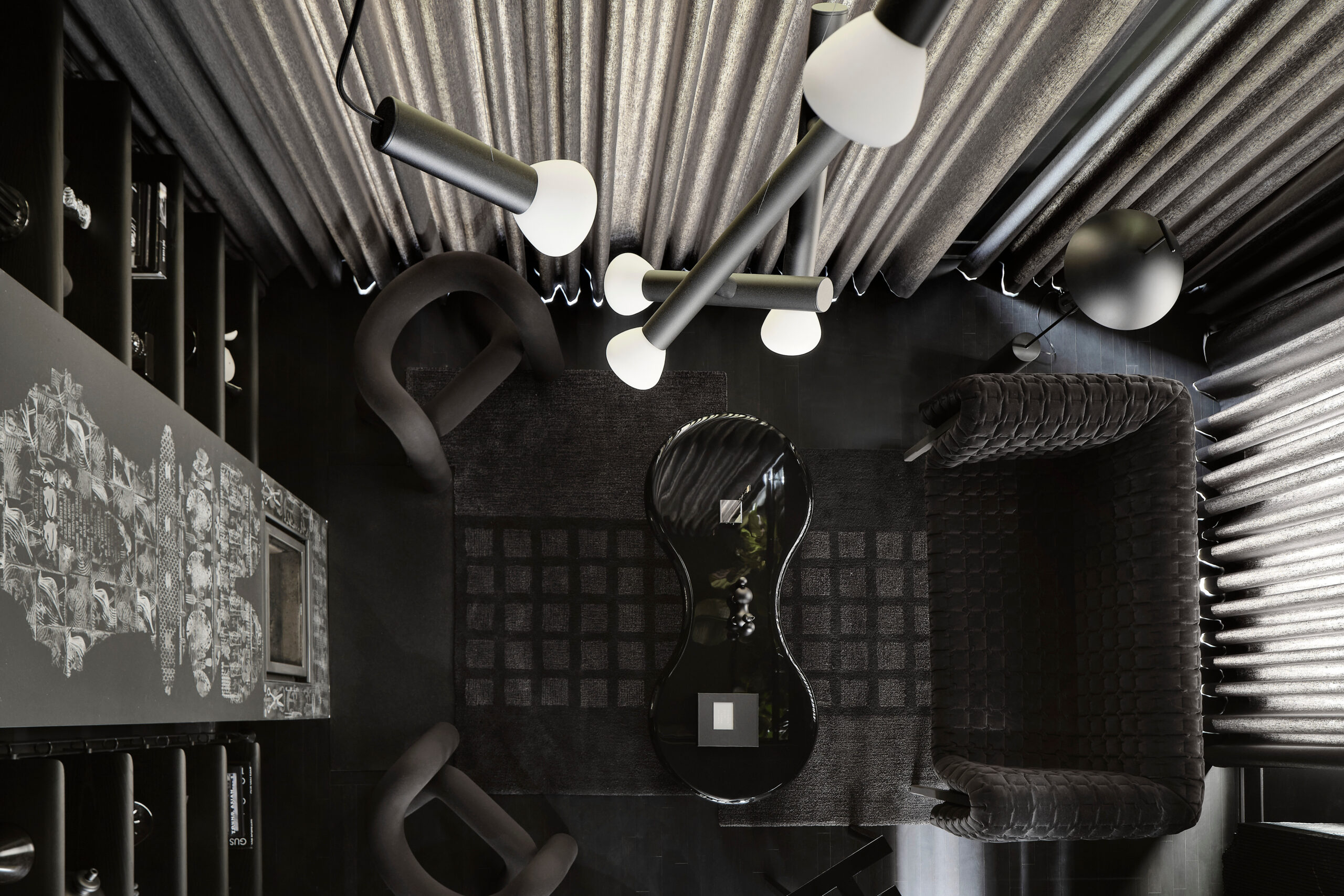
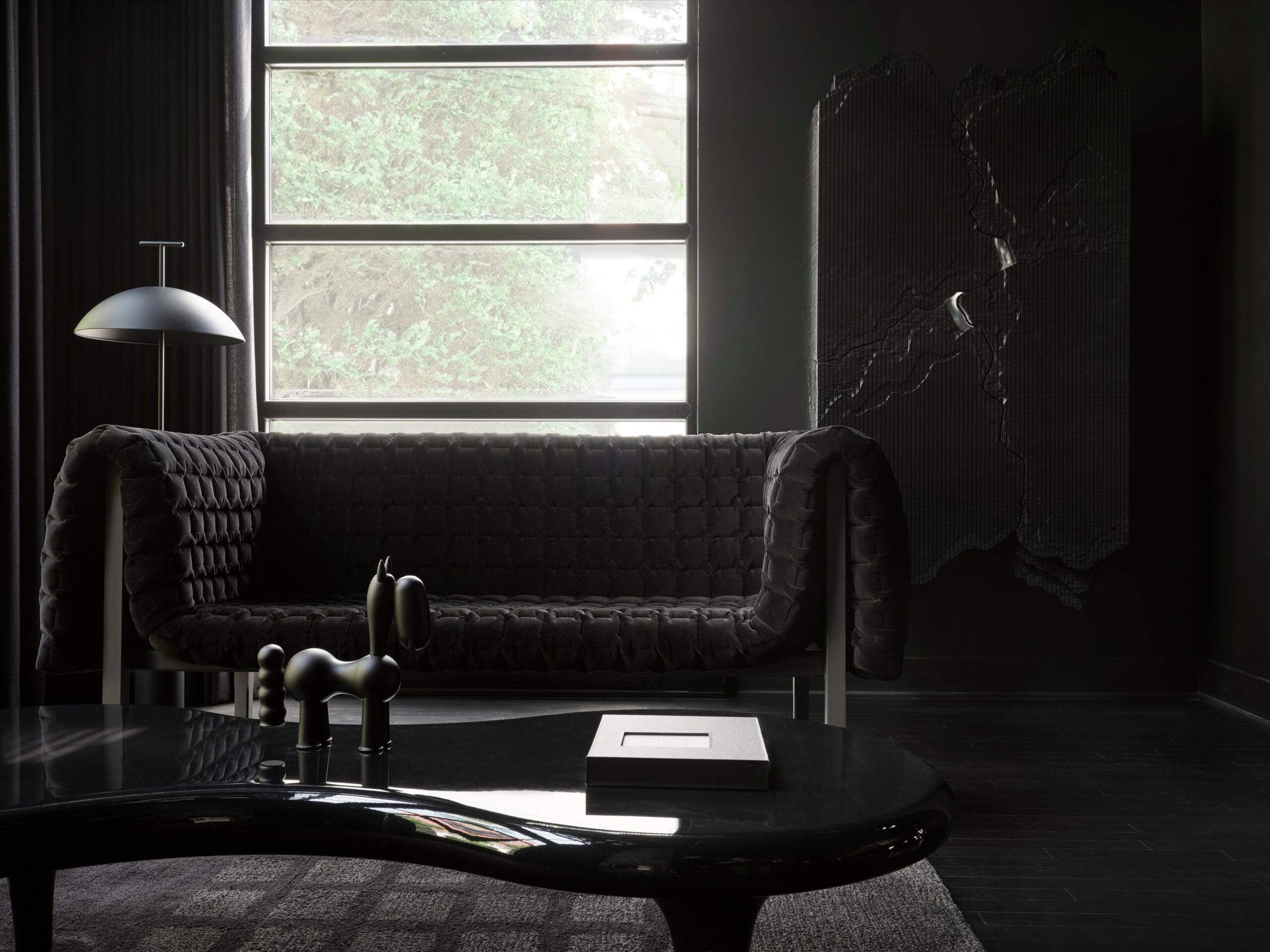
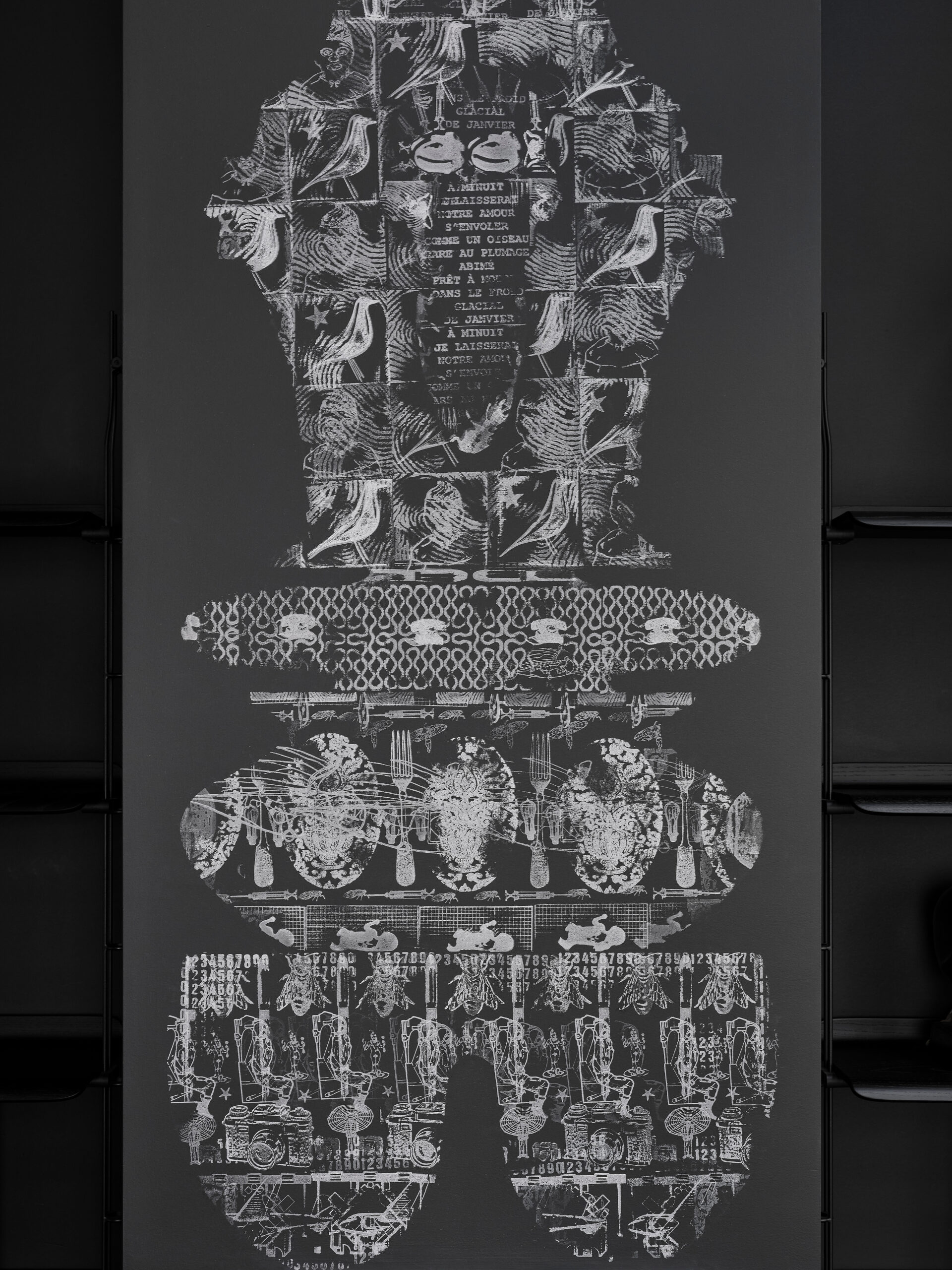
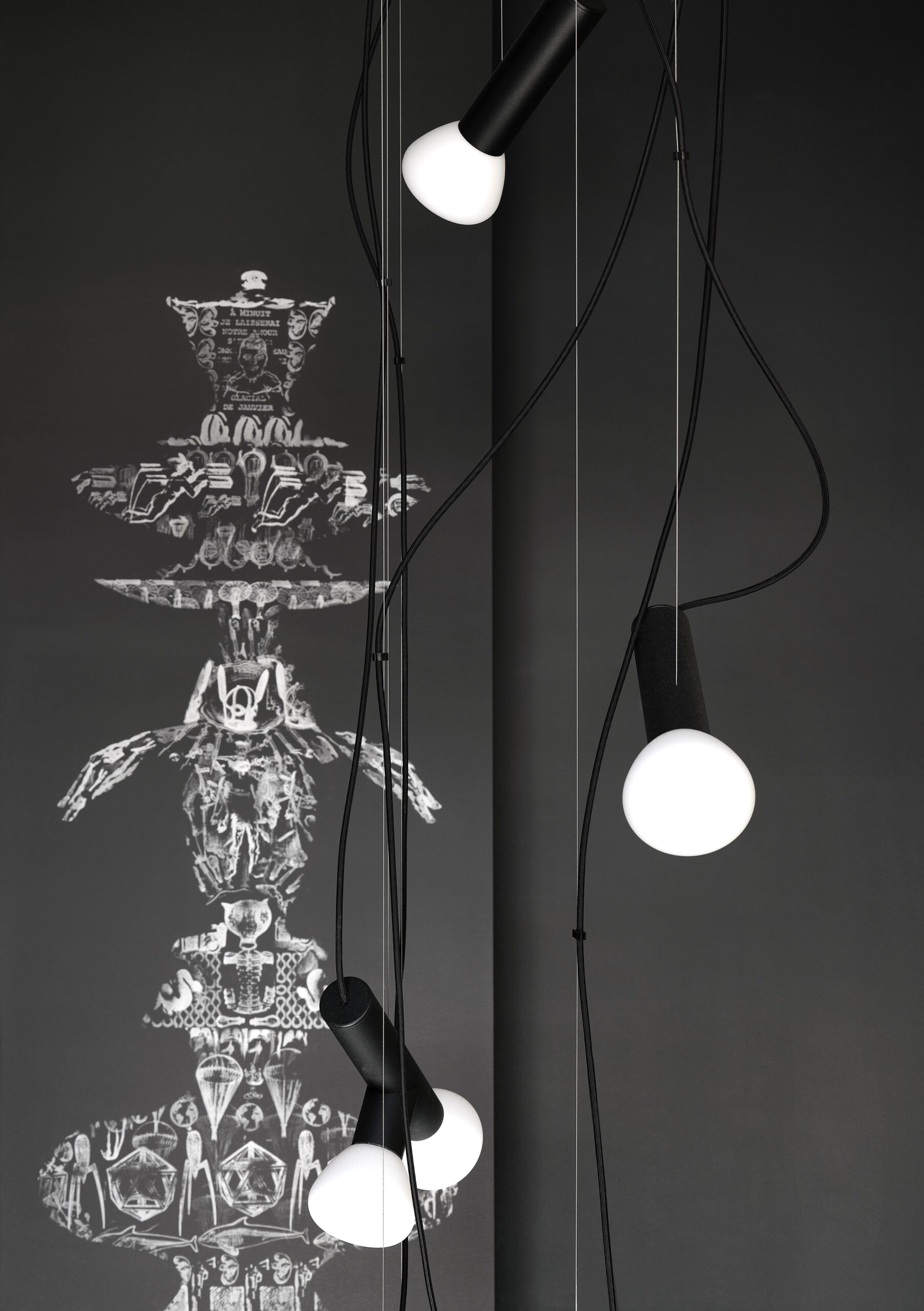
Bolitomino Studio centred the home around the colour black because of its theatricality and rare large-scale use in residential projects. The house itself—its ceiling height, floating metal staircase, room dimensions, and industrial windows, in particular—“called for black,” explains Index-Design president Arnaud Granata. “A rather ordinary house has become a perfect setting to showcase furniture and objects signed by the greatest designers.”
Almost everything in the house is black, including floors, bathroom tiles, walls, and curtains, with just a few pops of white and wood. Each piece chosen for La Maison Noire, which is 1,500 square feet spread out over three storeys, had to be bold enough to establish itself in a sea of black, using shape and texture to stand out in place of colour. “The goal was to experience living in a predominantly black environment on a daily basis,” Granata says. “Black is a colour that can be scary, especially in these proportions.” Bolitomino wanted to show that a black space can be warm and inviting—and indeed, with shelves teeming with sculptural objects, corners illuminated with whimsical lighting features, and cozy fireside seating, the contemporary home is anything but cold.
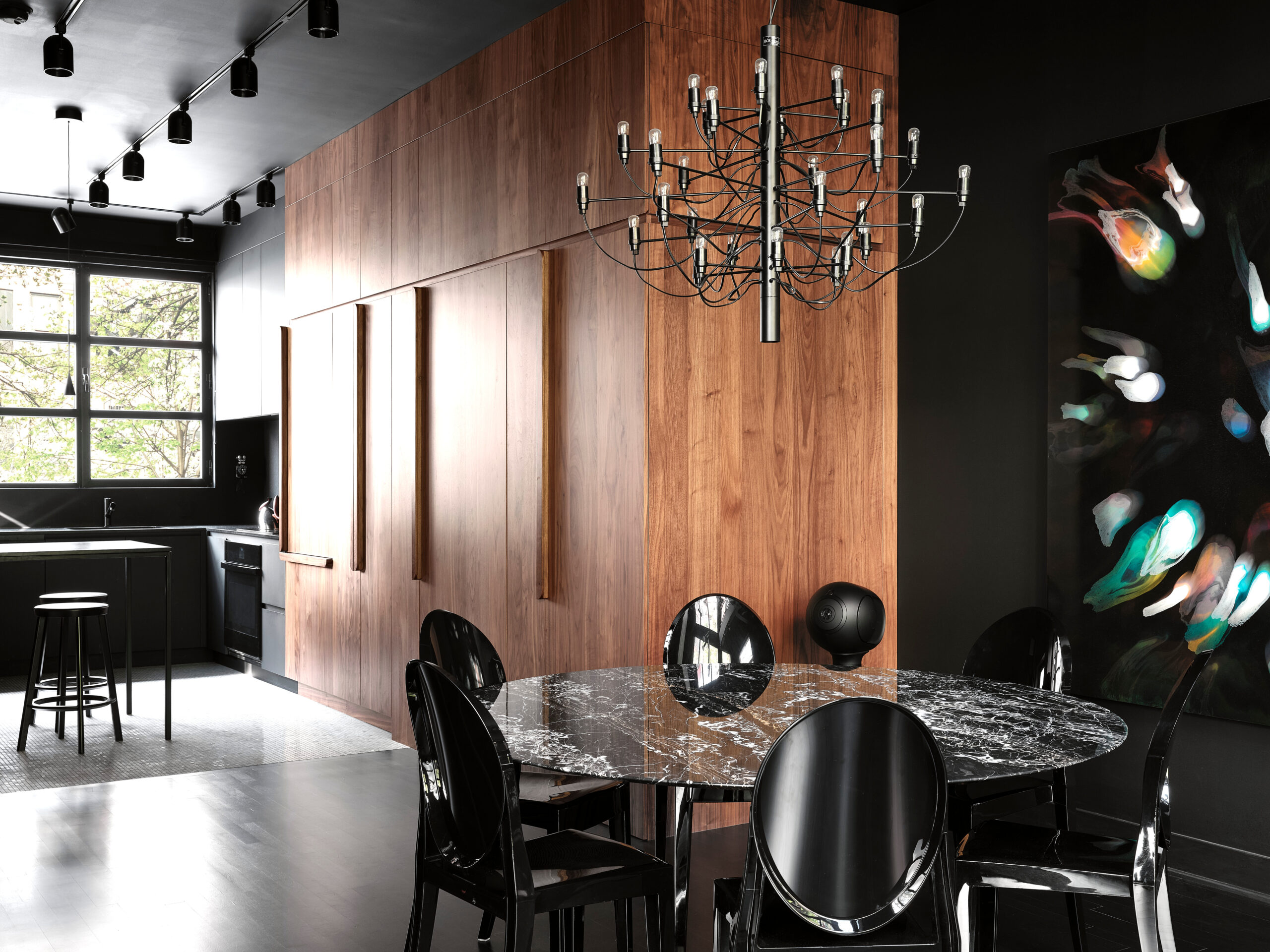
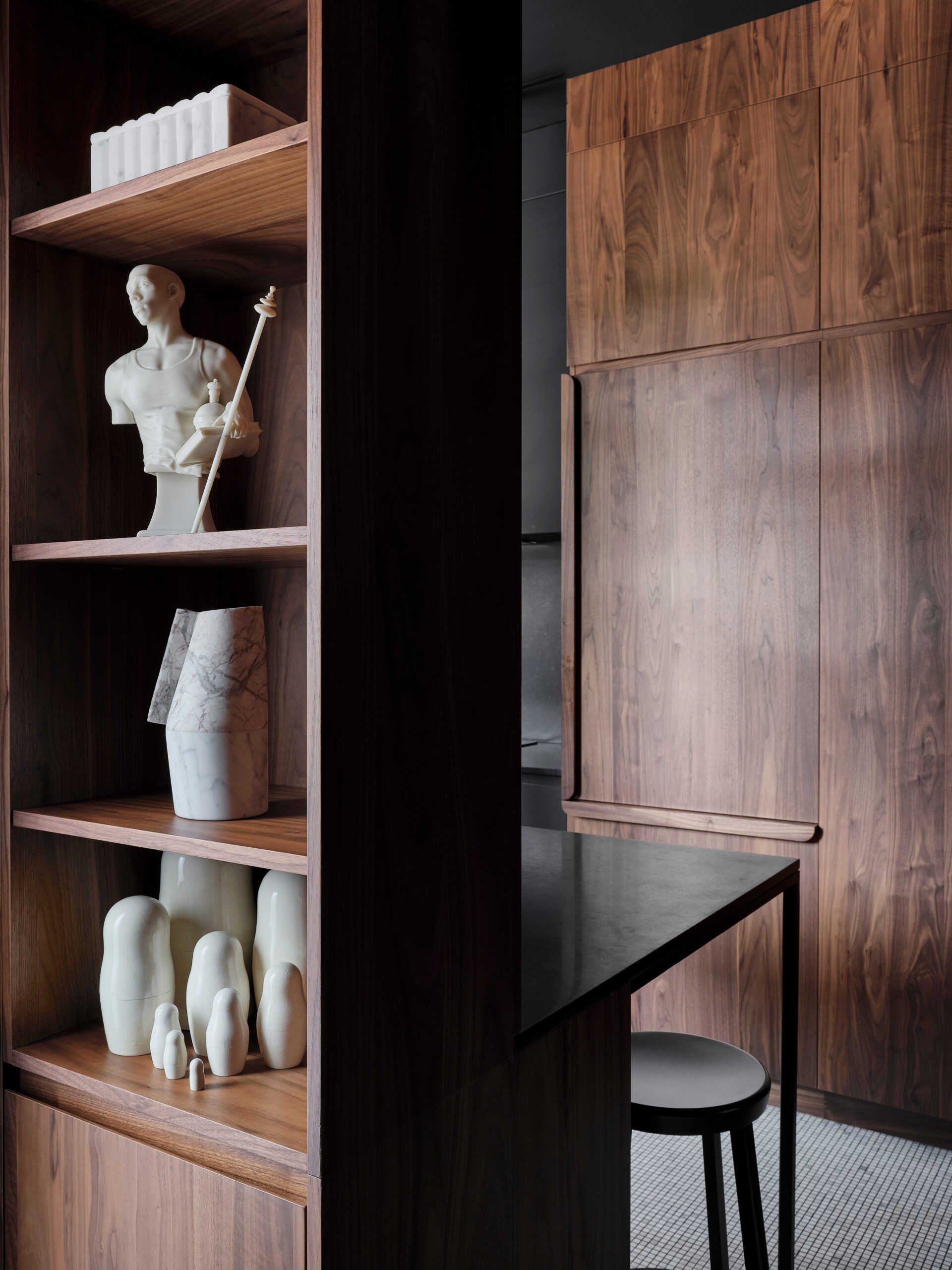
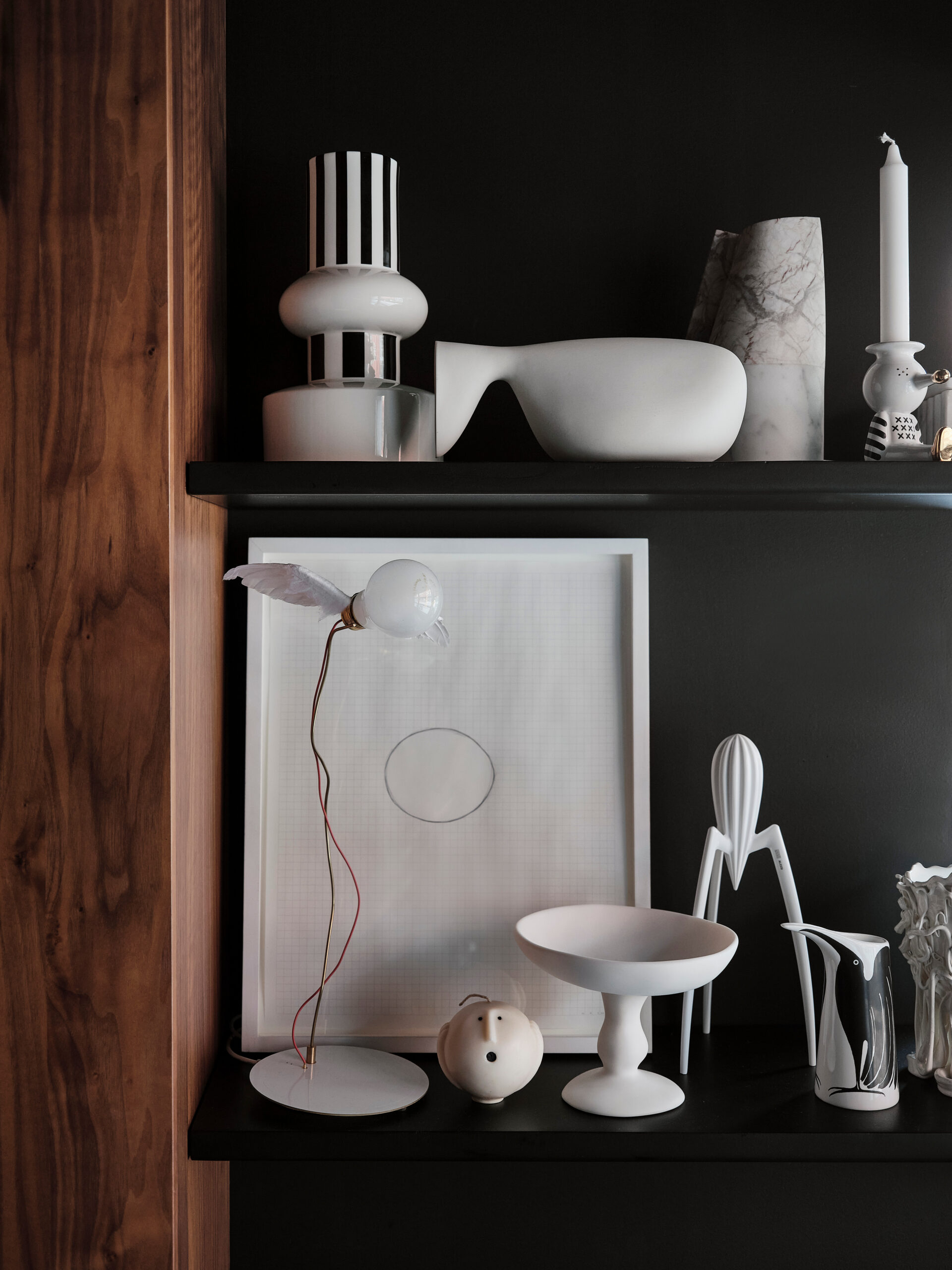

Nearly 80 per cent of La Maison Noire’s furnishings are from international designers and makers (including Kelli, Moustache, and Nitsa Meletopoulos), while the remaining 20 per cent come from Quebec creatives. Handmade flashlight-like chandeliers from Montreal lighting designer Lambert & Fils, part of the Parc collection, hang in the living room above a black-and grey-checkered rug made from natural wool and recycled cotton by Montreal furniture designer Will Choui. Simon Johns, who lives and works in Quebec’s Eastern Townships, lends to the house his Ledge Dry Bar, floating shelves made from ash wood with a rock-like door inspired by the cliffs of the Missisquoi Valley, while romantic flower arrangements by Prune les Fleurs, a floral studio founded by Nadine Jazouli with three Quebec locations, add rare pops of colour.
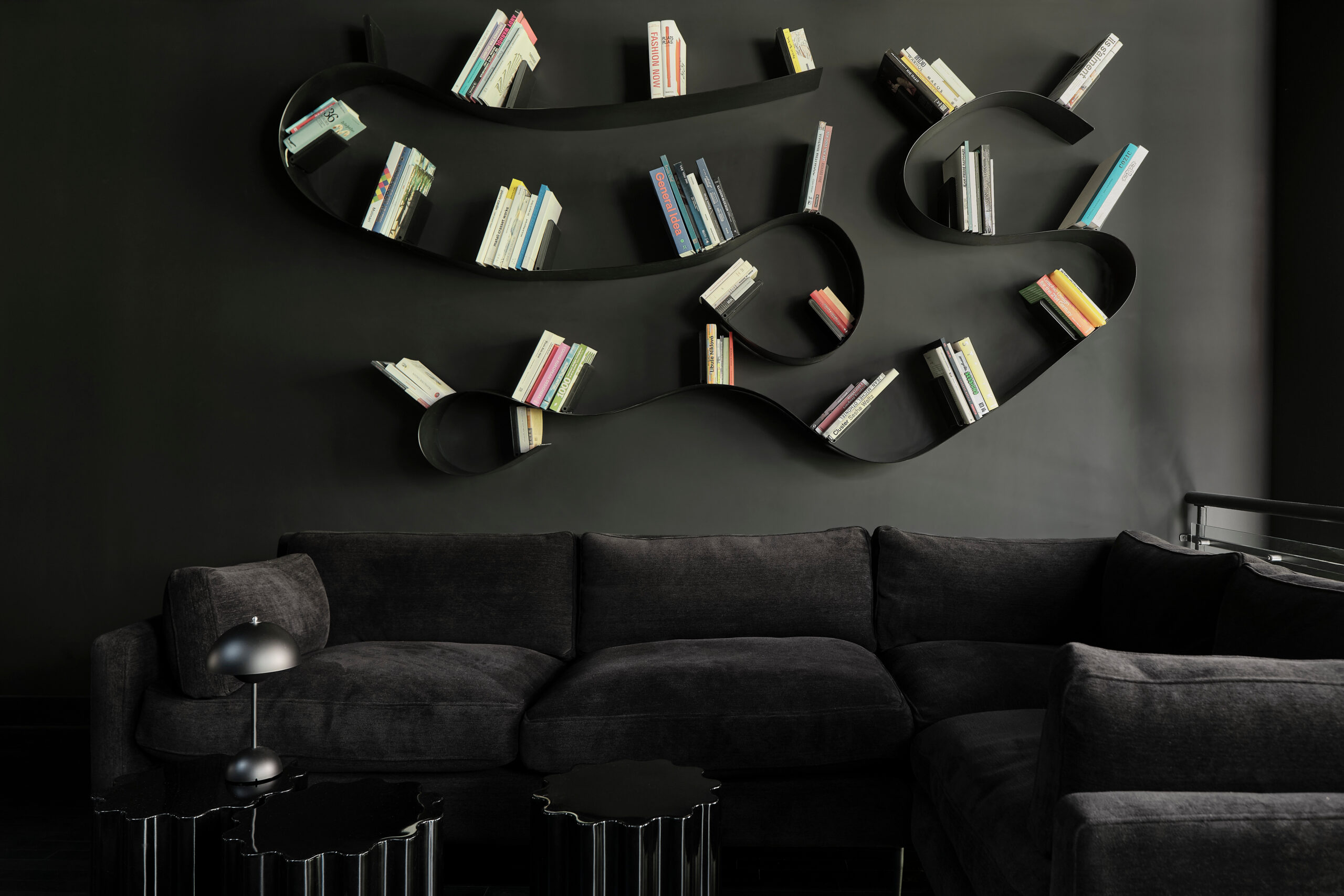
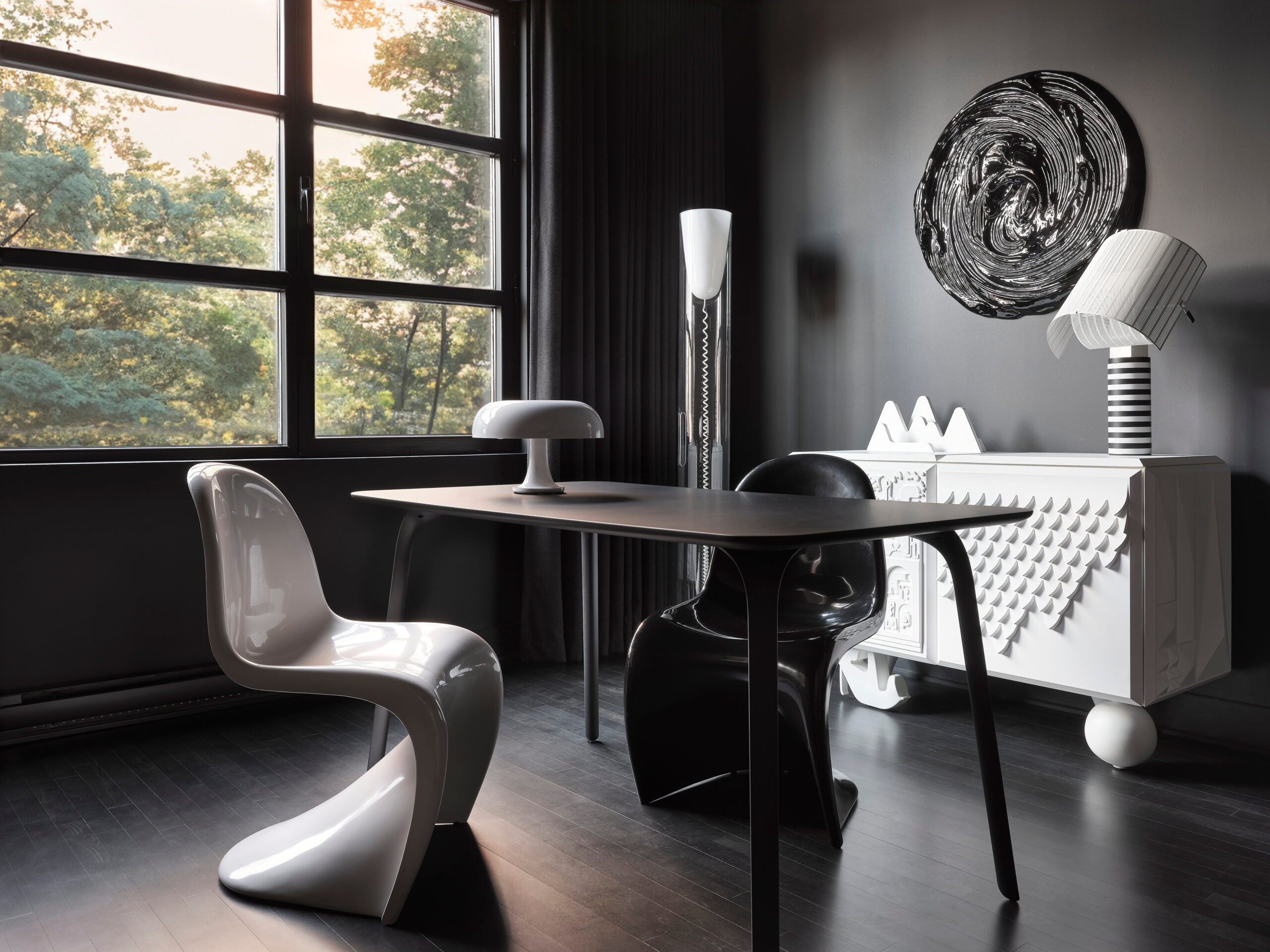
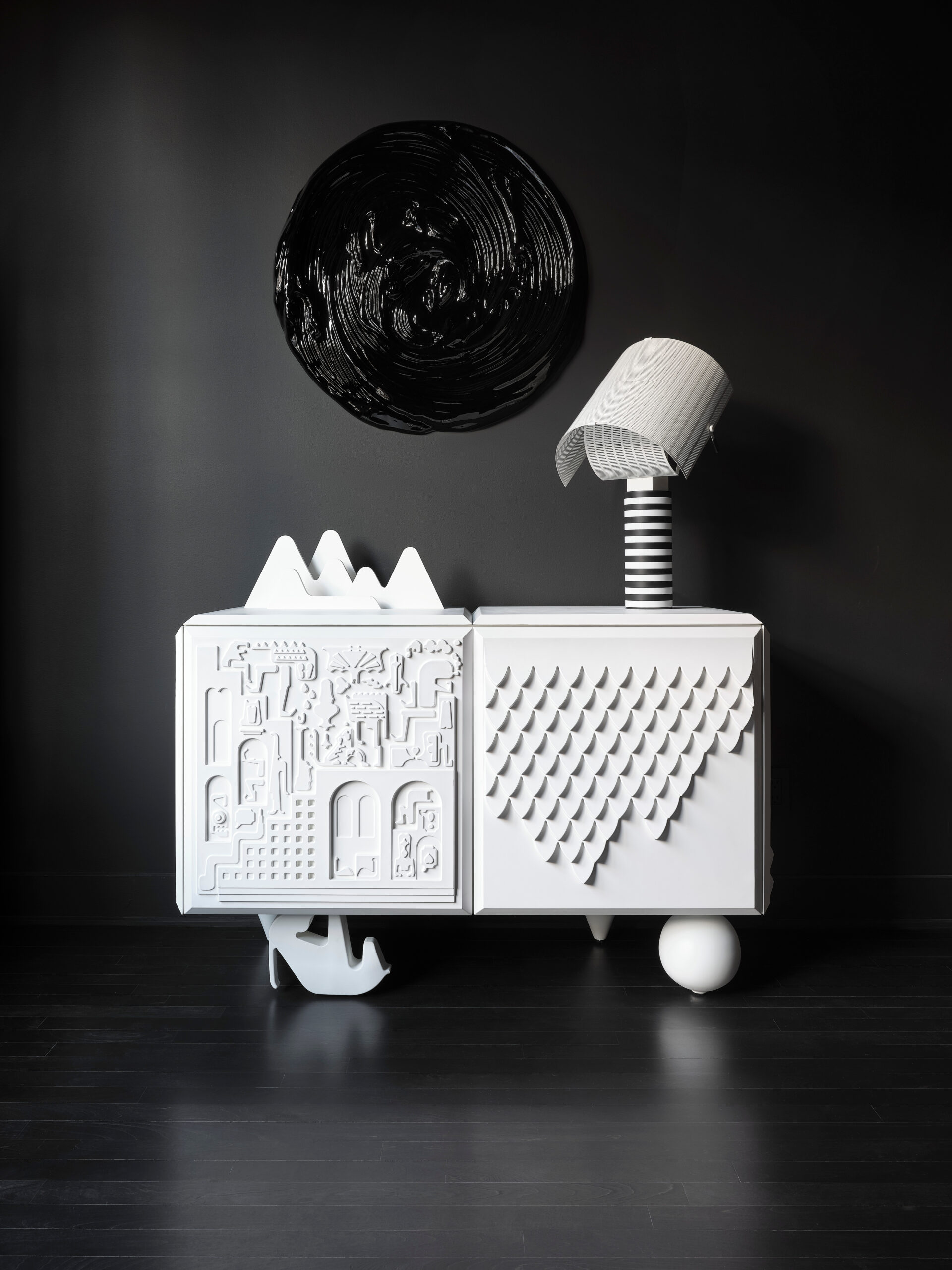
Each room features a signature piece from an influential Canadian artist, many sourced from Quebec and Toronto gallery Blouin Division, including work from Nicolas Baier, Caroline Monnet, François Lacasse, and Michel de Broin. But the most “emblematic gesture of the house,” according to Granata, is the custom white mural created using stamps by François Morelli. The celebrated Montreal artist is known for his exploration of relational art, which focuses on the social context of art and a more dynamic exchange between artist and viewer.
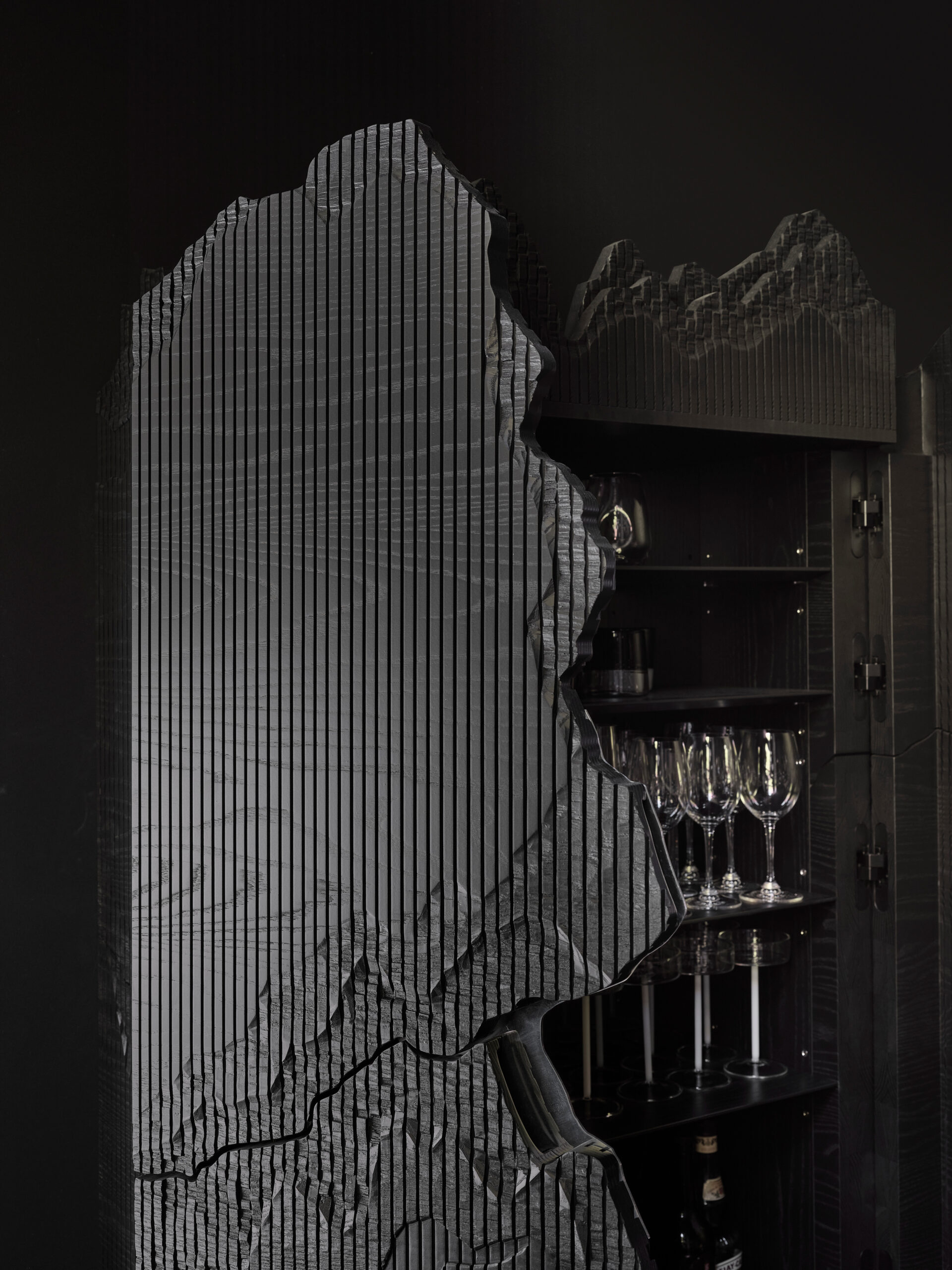
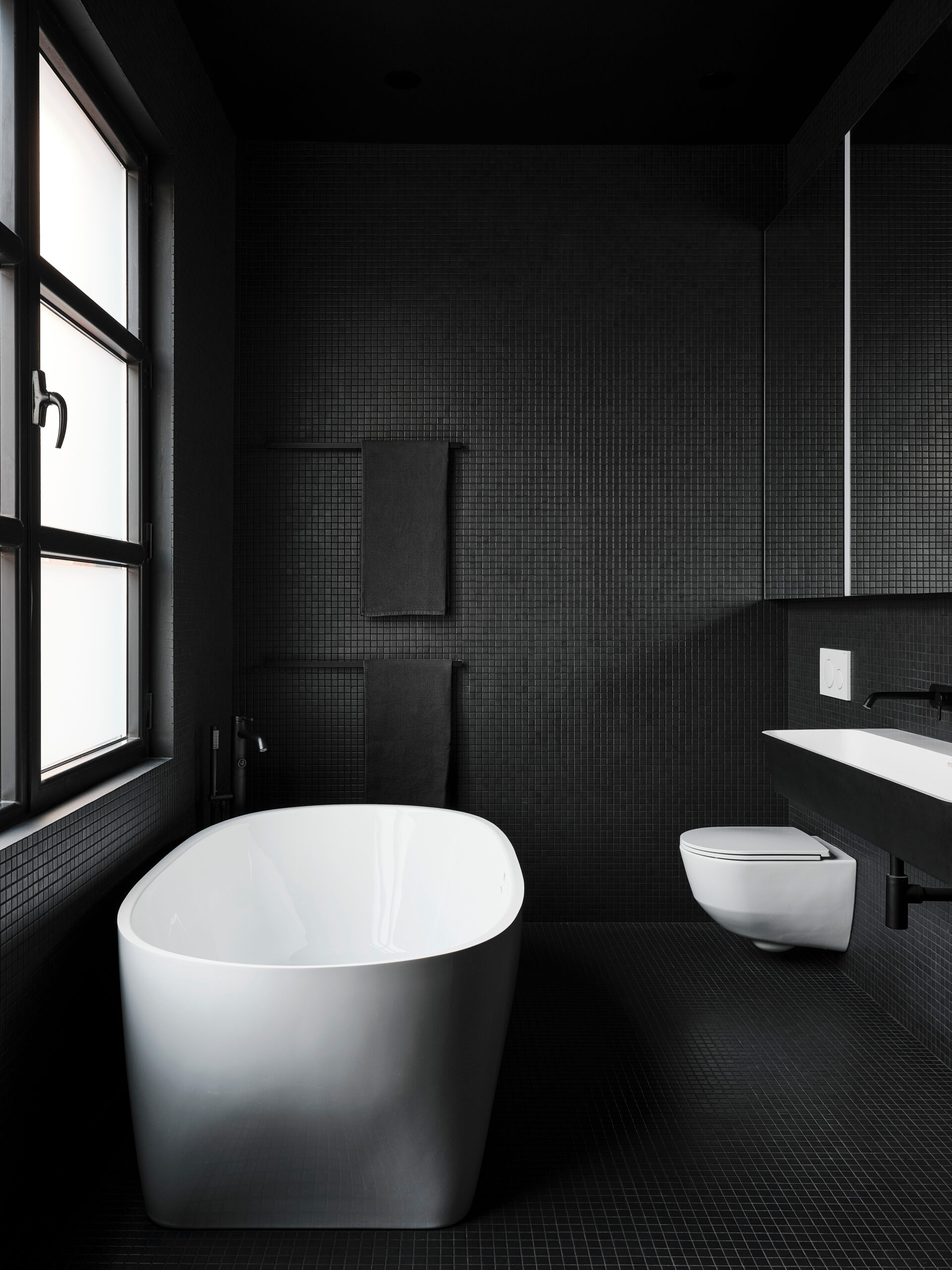
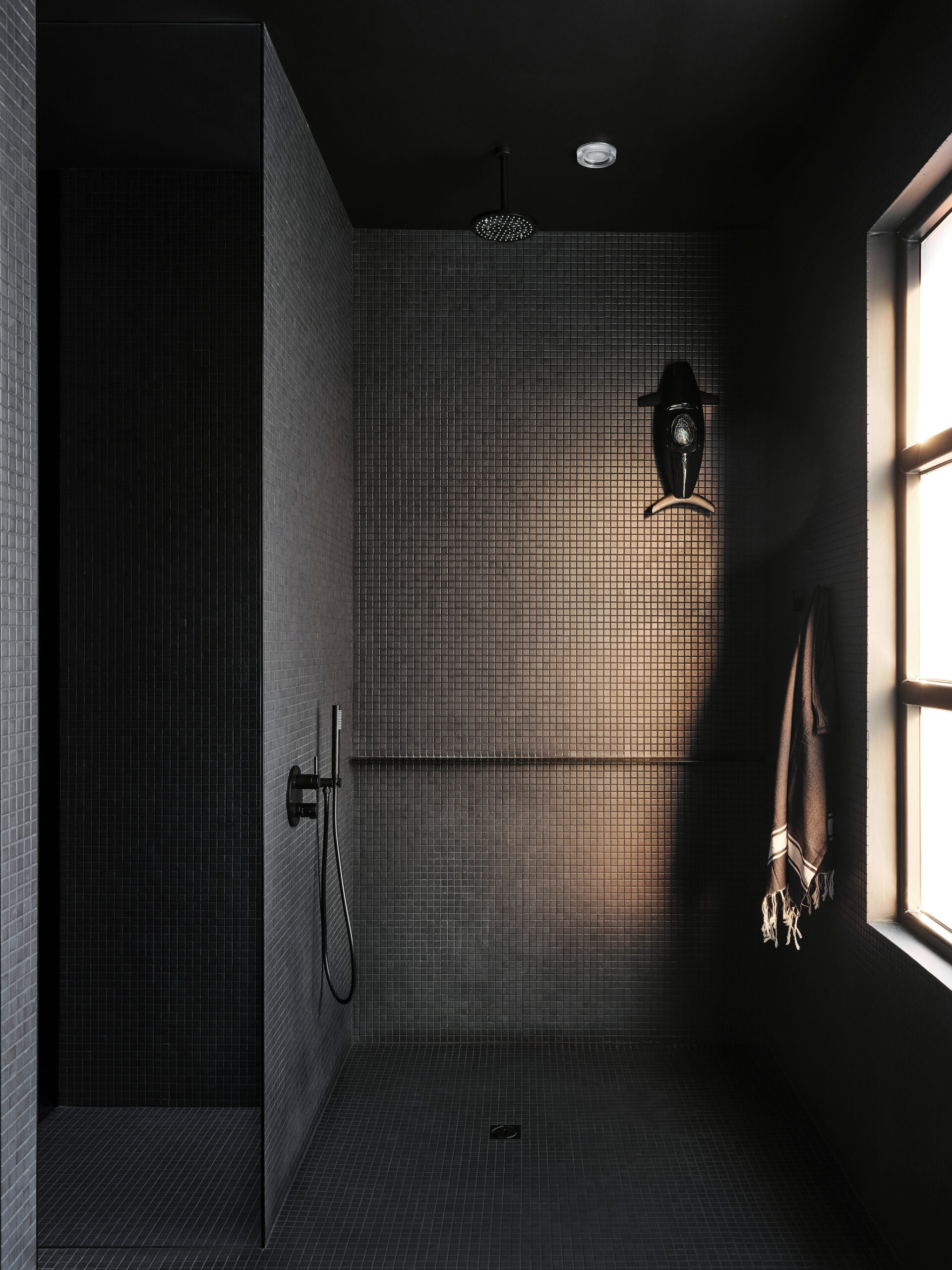
For the team behind La Maison Noire, artistic exploration and encouraging dialogues between the great creatives of today were important. “We like the idea of creating a bridge between important works of art by established visual artists and stylish designer objects. For us, creators in design and the arts are all researchers who push the aesthetic language further and create a real dialogue,” Granata says. “Living every day in such a neat environment has an impact on our mood and our apprehension of the world around us.”
Photography by Maxime Brouillet.

